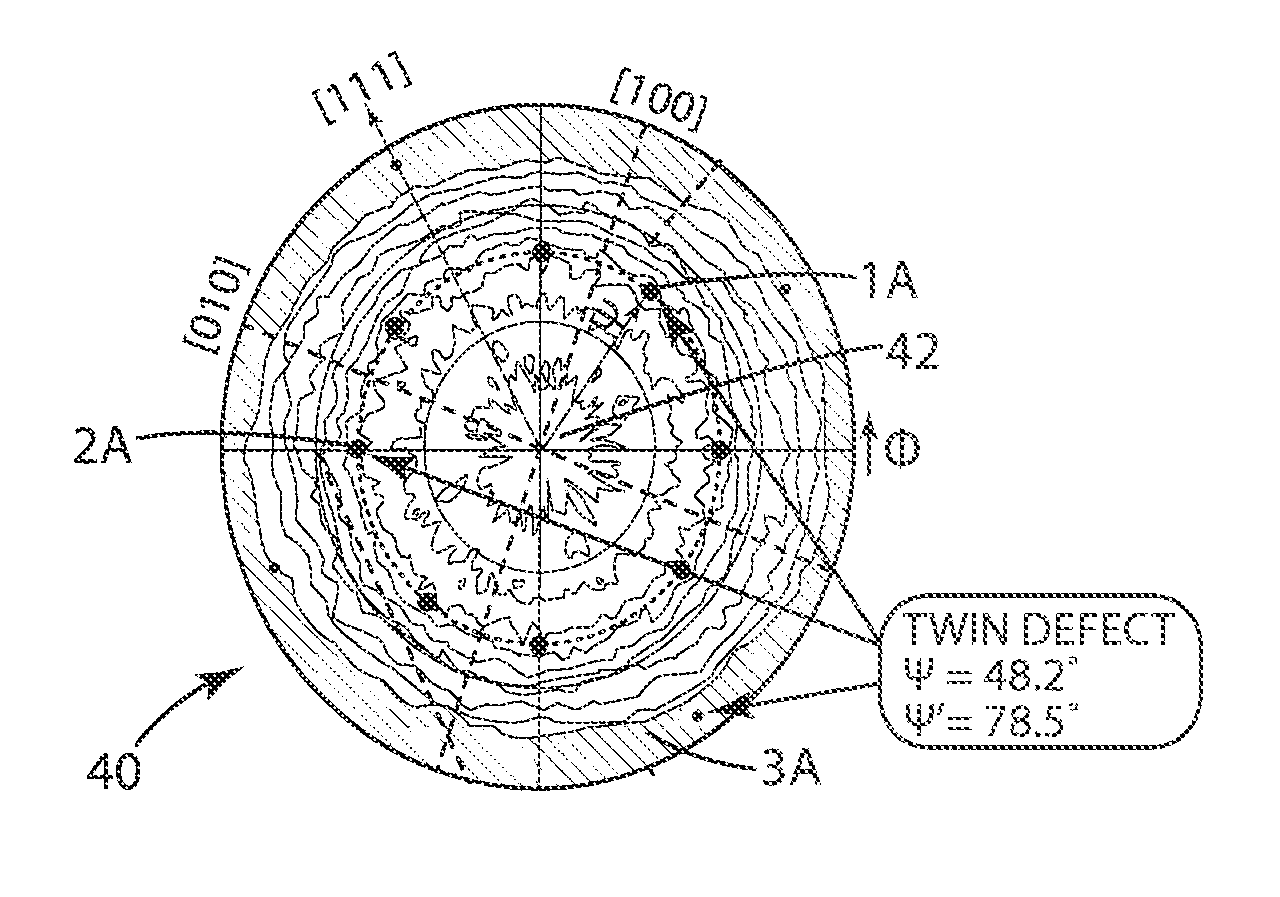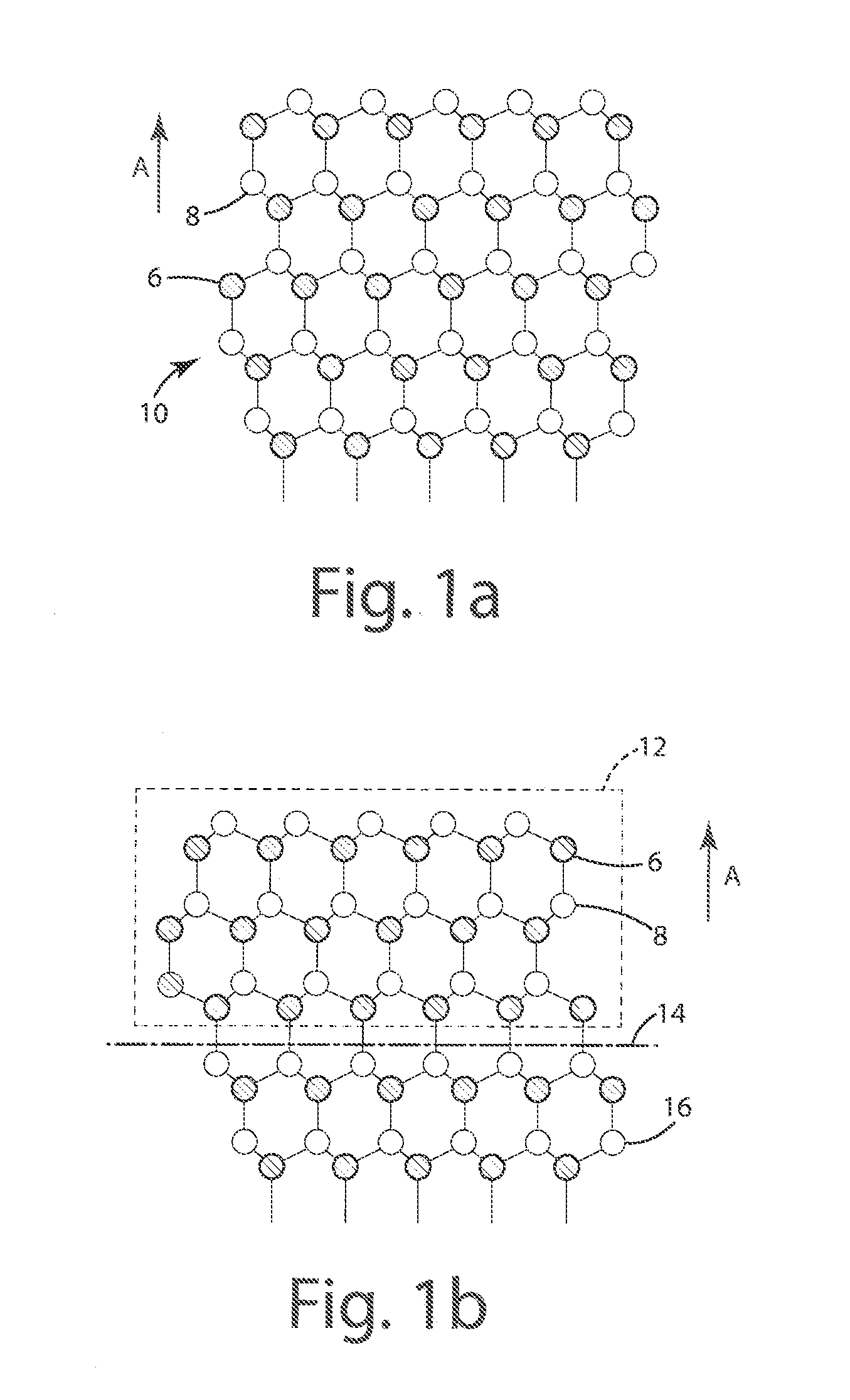X-ray Diffraction (XRD) Characterization Methods for Sigma=3 Twin Defects in Cubic Semiconductor (100) Wafers
a cubic semiconductor and twin defect technology, applied in the direction of material analysis using radiation diffraction, instruments, measurement devices, etc., can solve the problems of affecting the performance of electronic devices made from semiconductor materials, and affecting the performance of semiconductor materials. , to achieve the effect of reducing/eliminating defects in wafers, rapid modification of wafer fabrication processes, and short tim
- Summary
- Abstract
- Description
- Claims
- Application Information
AI Technical Summary
Benefits of technology
Problems solved by technology
Method used
Image
Examples
Embodiment Construction
[0027]For purposes of description herein, the terms “upper,”“lower,”“right,”“let”“rear,”“front,”“vertical,”“horizontal,” and derivatives thereof shall relate to the invention as oriented in FIG. 1. However, it is to be understood that the invention may assume various alternative orientations and step sequences, except where expressly specified to the contrary. It is also to be understood that the specific devices and processes illustrated in the attached drawings, and described in the following specification, are simply exemplary embodiments of the inventive concepts defined in the appended claims. Hence, specific dimensions and other physical characteristics relating to the embodiments disclosed herein are not to be considered as limiting, unless the claims expressly state otherwise.
[0028]As discussed in more detail below, one aspect of the present invention is a process or method for determining a quality factor comprising a ratio as defined in equations 1.0, 1.1, and 1.2 below. T...
PUM
| Property | Measurement | Unit |
|---|---|---|
| tilt angle | aaaaa | aaaaa |
| tilt angle | aaaaa | aaaaa |
| tilt angle | aaaaa | aaaaa |
Abstract
Description
Claims
Application Information
 Login to View More
Login to View More - R&D
- Intellectual Property
- Life Sciences
- Materials
- Tech Scout
- Unparalleled Data Quality
- Higher Quality Content
- 60% Fewer Hallucinations
Browse by: Latest US Patents, China's latest patents, Technical Efficacy Thesaurus, Application Domain, Technology Topic, Popular Technical Reports.
© 2025 PatSnap. All rights reserved.Legal|Privacy policy|Modern Slavery Act Transparency Statement|Sitemap|About US| Contact US: help@patsnap.com



